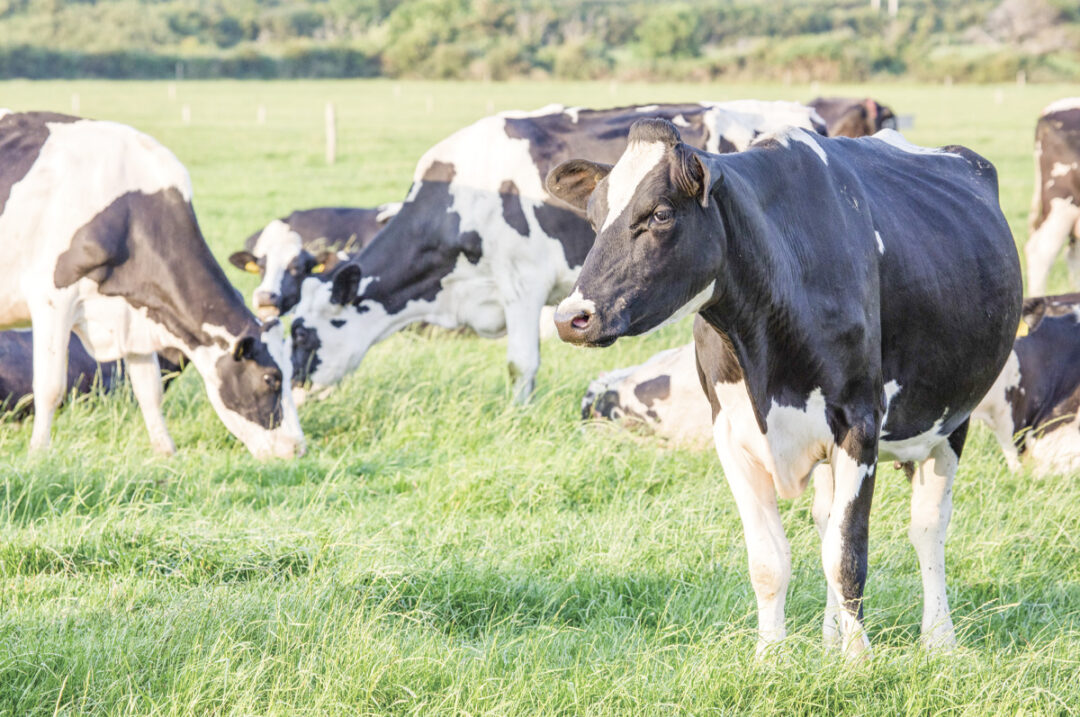Managing bovine respiratory disease (BRD) can sometimes feel like a game of whack-a-mole for dairy producers. Many stressors can pop up with little to no advanced warning early in a calf’s life, putting them at greater risk for developing BRD.
When we see an uptick in BRD cases, our reflex is to take a magnifying glass to the calf, but we often forget about the bigger picture and the role the cow plays in a calf’s future health and performance, especially in the dry period.
Dry cow management
Proper dry cow management practices can help to promote high-quality colostrum production and play a crucial role in determining a calf’s ability to grow, develop and thrive as a newborn. Several key components contribute to a successful dry period:
- Heat stress management: Implementing effective heat stress management measures, such as proper ventilation and cooling systems, ensures cows remain comfortable and less prone to stress-induced health issues, which in turn supports optimal calf growth. Additionally, research has demonstrated that exposure to intrauterine heat stress during late gestation affects offspring performance into adulthood.
- Avoid overcrowding: Overcrowding can be stressful for the cow. Optimizing resting and bunk space can mitigate the risk of illness and disease transmission.
- Limit commingling of differing lactations: Separating first-lactation heifers from mature cows during the dry period can be a beneficial management practice because it can decrease competition at the feedbunk and allows for specialized care and nutrition.
- Reduce peripartum inflammation: Proper care and nutrition during the transition from pregnancy to lactation can help mitigate peripartum inflammation, which can reduce the likelihood of complications during calving.
- Dial in optimal days in pre-fresh: Monitoring and managing the length of time cows spend in the pre-fresh group can help optimize their physical condition before calving and decrease the risk of complications and infections that can compromise calf health at birth.
- Promote quality colostrum production: Prioritizing the production of high-quality colostrum packed with essential antibodies can prepare calves with a strong immune foundation.
These management strategies lay the groundwork for and collectively contribute to improved calf growth, health and resilience to diseases like BRD, and ultimately can lead to long-term success of your operation. Sound management practices during the dry period can also improve vaccine efficacy.
Vaccines improve antibody development
Vaccinating the cow during pregnancy is crucial for two main reasons: to increase antibody levels in the cow to improve her own immunity and for the development of more antibodies that can be transferred into the colostrum.
Vaccination timing is important. Once a vaccine is administered, antibody production does not start immediately in the cow. The cow’s body must first recognize the antigen and then signal the specific B-cells, or cells that aid in immune response, to start producing antibodies. This process can take up to a week to start and an additional two to three weeks to see substantial antibody production.
Antibodies transfer from the cow’s bloodstream into the colostrum around five weeks before calving. Therefore, vaccinating cows and heifers at eight to 16 weeks prior to calving allows for significant antibody production as well as time for a booster, if necessary. Regardless of your vaccine protocol, always consult with your herd veterinarian before administering vaccinations.
Passive transfer of immunity is critical
When a calf is in utero, it does not obtain antibodies from its mother. Therefore, once the calf is born, the only way for it to receive the antibodies the cow developed from her vaccination and exposure to other specific antigens in the dry period is through the passive transfer of immunity through colostrum. Passive immunity protects the calf from disease-causing pathogens it is exposed to immediately after birth until its immune system is equipped to defend itself.
Additionally, research shows when feeding colostrum, the quality, quantity, timeliness and cleanliness of the colostrum matter for the proper absorption and transfer of passive immunity. Feed calves 10% of their bodyweight in high-quality colostrum within an hour of birth, followed by an additional feeding within 12 hours.
Adding another layer of protection
If the calf received an adequate transfer of antibodies from the cow, they should have the protection they need while their immune system develops. Eventually, the protection the calf received from the colostral antibodies will wane, giving way to the calf’s own immunity. At that time, calves can benefit from a modified-live viral (MLV) vaccine to continue building their immunity to the viruses that can predispose them to bacterial infection. BRD-causing pathogens are both viral and bacterial, so choosing vaccines that protect against both is an important part of a BRD prevention strategy.
Treat and control BRD
Even with excellent management practices and vaccination protocols in place, antibiotics may be necessary for BRD treatment and control. Antibiotic selection is important because BRD has varied causative pathogens. Work with your veterinarian for diagnostic evaluation and antibiotic selection.
Administering the appropriate dosage at the onset of BRD symptoms can help mitigate the spread and impact of BRD while also reducing antibiotic resistance. Regardless of the antibiotic used, continue monitoring calves and follow the recommended protocol for re-treatment.
Stressors that increase a calf’s risk of contracting BRD can pop up anywhere at any time. Before you find yourself grabbing for the bat, consider taking a look at your management practices, including the dry period.
References omitted but are available upon request by sending an email to the editor.







